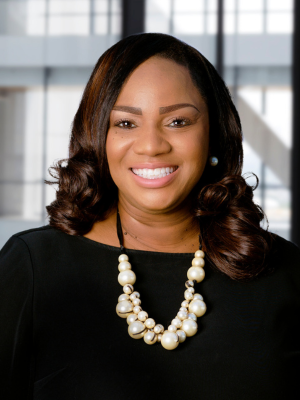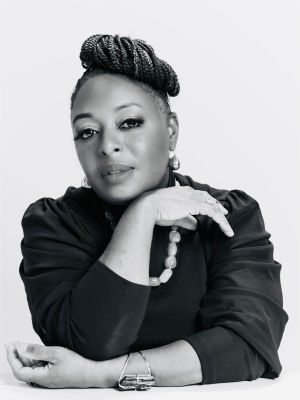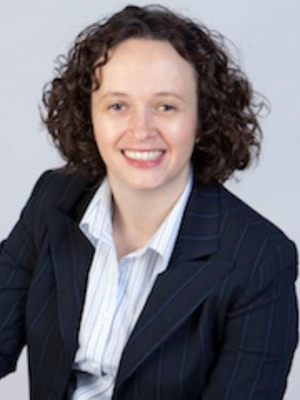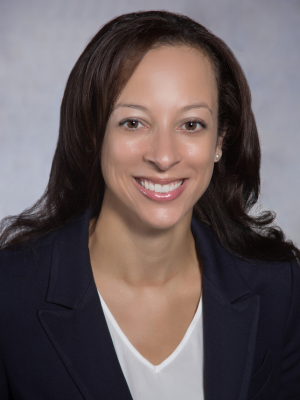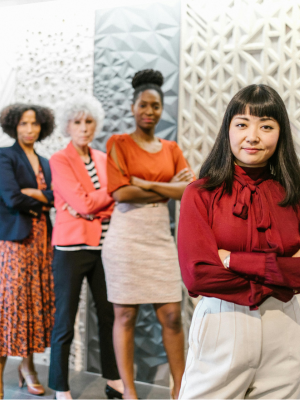 A study was just released by McKinsey & Co, in collaboration with Lean In, the nonprofit founded by former Meta COO Sheryl Sandberg, and it turns the idea that women only need to shatter the glass ceiling in order to find equity at the top on its head. It found that women face their most formidable challenge not at the top, but when attempting to transition into managerial roles. For every hundred men who are promoted from entry-level to managerial positions, only ninety-one white women make the first step. This powerful disparity is even more pronounced for women of color, with only eighty-nine Asian women, and fifty-four Black women being promoted for every hundred men. The study names this barrier in women’s careers “The Broken Rung”, and it is a major hurdle for women trying to climb the corporate ladder.
A study was just released by McKinsey & Co, in collaboration with Lean In, the nonprofit founded by former Meta COO Sheryl Sandberg, and it turns the idea that women only need to shatter the glass ceiling in order to find equity at the top on its head. It found that women face their most formidable challenge not at the top, but when attempting to transition into managerial roles. For every hundred men who are promoted from entry-level to managerial positions, only ninety-one white women make the first step. This powerful disparity is even more pronounced for women of color, with only eighty-nine Asian women, and fifty-four Black women being promoted for every hundred men. The study names this barrier in women’s careers “The Broken Rung”, and it is a major hurdle for women trying to climb the corporate ladder.
The study is not breaking new ground but is a reminder that women are not responsible for the broken rung. They are not failing to seek promotions or leaving their careers more often than men. Instead, systemic biases and workplace dynamics are the root cause. The second key point underscores that women who have similar track records and work experiences relative to their male peers are judged by a different standard. Women often receive promotions based on their past achievements, while men are promoted based on their perceived future potential. The impact of this inequitable orientation has a huge effect on women early in their careers. As the study states without equivocation, until the broken rung is fixed, gender parity will remain out of reach.
While the study does an excellent job of identifying what the broken rung is and why it happens, it falls short when making suggestions for remedies. What do we do to solve this problem? It suggests companies must track inputs and outcomes, de-bias performance reviews and promotions and establish clear evaluation criteria. While these are important, they are the absolute bare minimum.
Below are three things women can do right now to build an unbreakable first rung.
- Ask questions
If you are passed over for a promotion, take steps to ensure that it doesn’t happen again. The first thing to do would be to ask the following question, “I thought Chad and I were similarly situated in terms of our accomplishments. What can I do differently that he is currently doing to make sure that next time I’m able to take the next step in my career?” Often people do not know that their implicit bias is getting in the way of their decision-making process. By having a lengthy conversation about it, this will help the other person not only give you tips on what to do differently but also, in the best-case scenario, self-reflect on what happened. Going in guns blazing can cause people to be defensive, but asking a question is one of the more effective ways of getting people to look more deeply and can be very powerful. - Brag Tactically
Women are taught not to brag. Men don’t seem to have as hard of a time bragging. To back up this point, visualize Thanksgiving dinners. Often women will do most of the cooking, and then when everyone sits down to eat Uncle Bob proudly announces that he cooked the beans! Men don’t have it wrong. In fact, women should not be afraid to take a page from their book. If you’re uncomfortable bragging, use The Brag Sandwich by bookending your brag with thanks and gratitude. For example, don’t say, “I closed that deal and the company made $2 million. It’s really great!” Instead use the Brag Sandwich and say, “I’m so thankful I was able to work on this project. I closed the deal and the company made $2 million. It’s really great! It was a lot of hard work, but I’m so happy I had the opportunity.” The brag sandwich is easier to say for many, but still gets the point across about your accomplishments. - Turn around
If you were able to somehow jump over the broken rung, make sure you reach down and pull other women up with you. Given how difficult it is for women, it’s easy to get exhausted. How can you focus on other women when you’re fighting a daily batter yourself? Unfortunately, this is exactly why many women don’t advocate for the women coming up behind them. The flipside of this, however, is that there is safety and numbers. The more women who rise the more we can support each other as we create spaces that are welcoming for all.
The broken rung is not new, but the attention it’s getting is. This is the moment for women to capitalize on this new awareness and push for systematic change. The more women who get past the first rung, the more women can occupy all rungs – and that is how we shatter the glass ceiling.
By: Eliza VanCort, Transformation Teacher and #1 bestselling author of A Woman’s Guide to Claiming Space: Stand Tall. Raise Your Voice. Be Heard (named Maria Shriver’s book of the week), who has dedicated her life to empowering women to live bravely and claim the space they deserve.
(Guest Contribution: The opinions and views of guest contributions are not necessarily those of theglasshammer.com)

